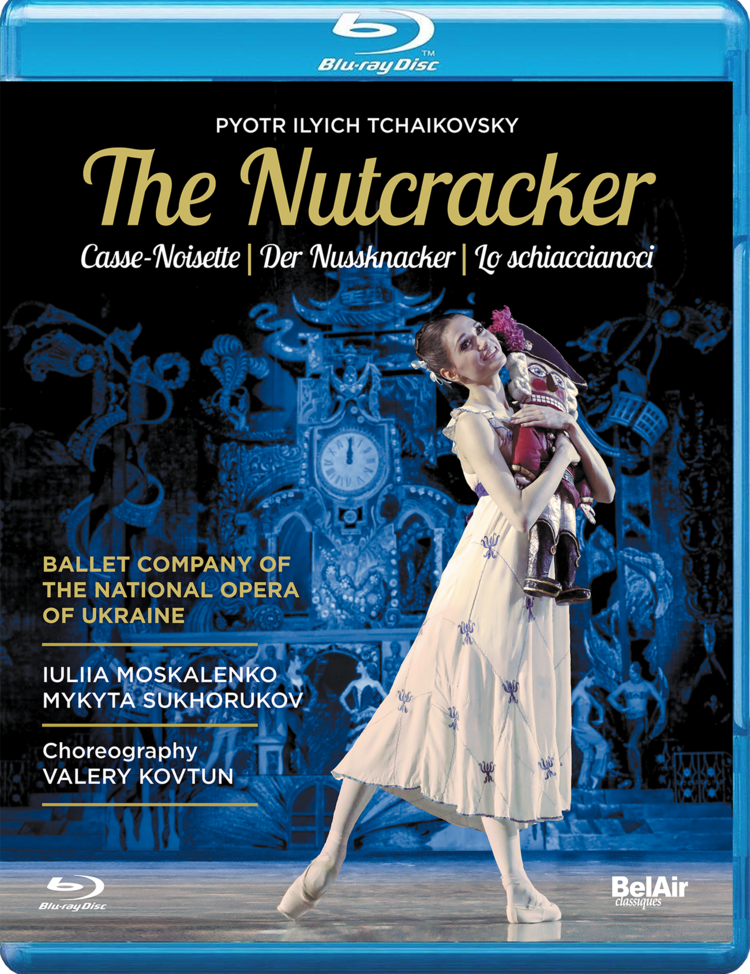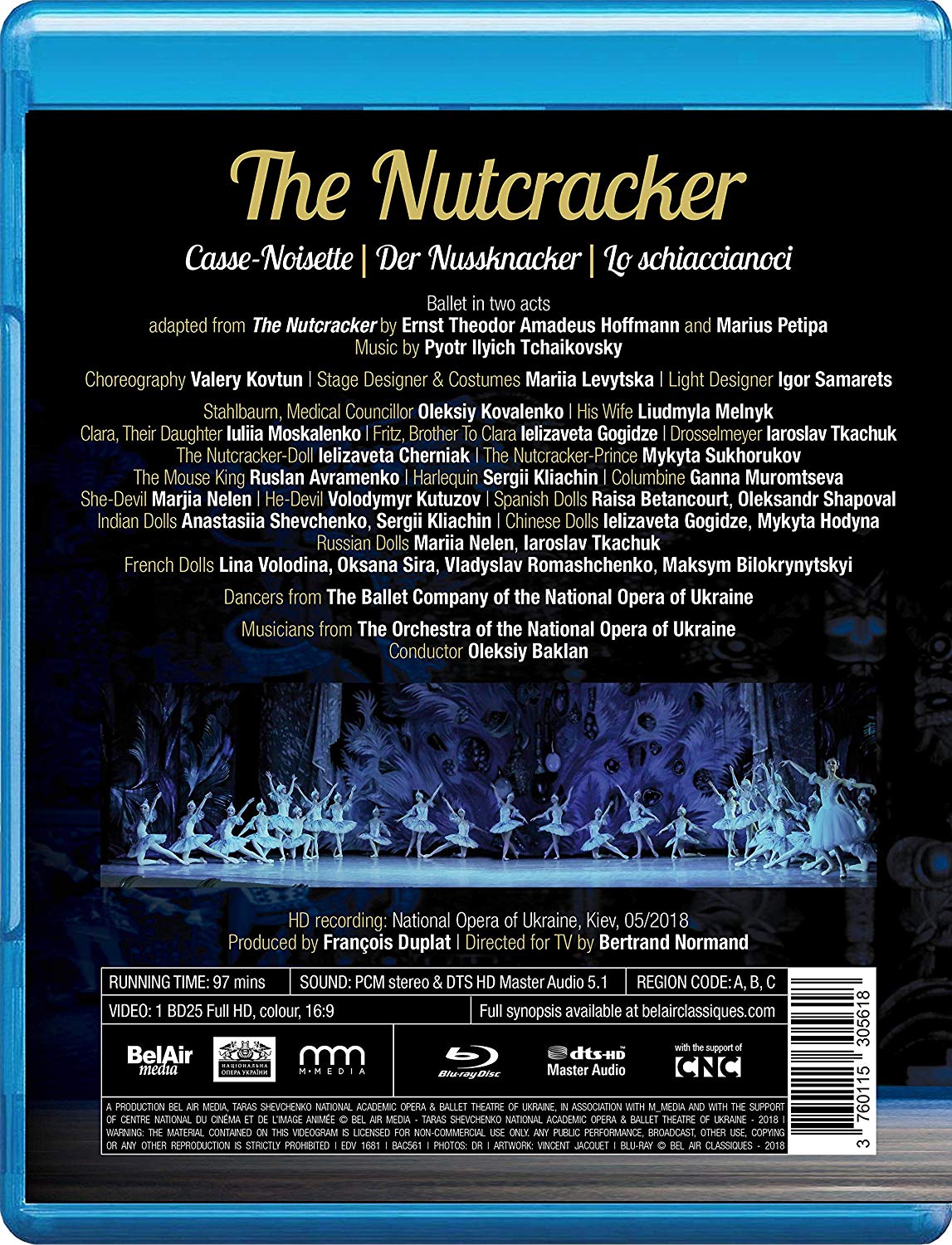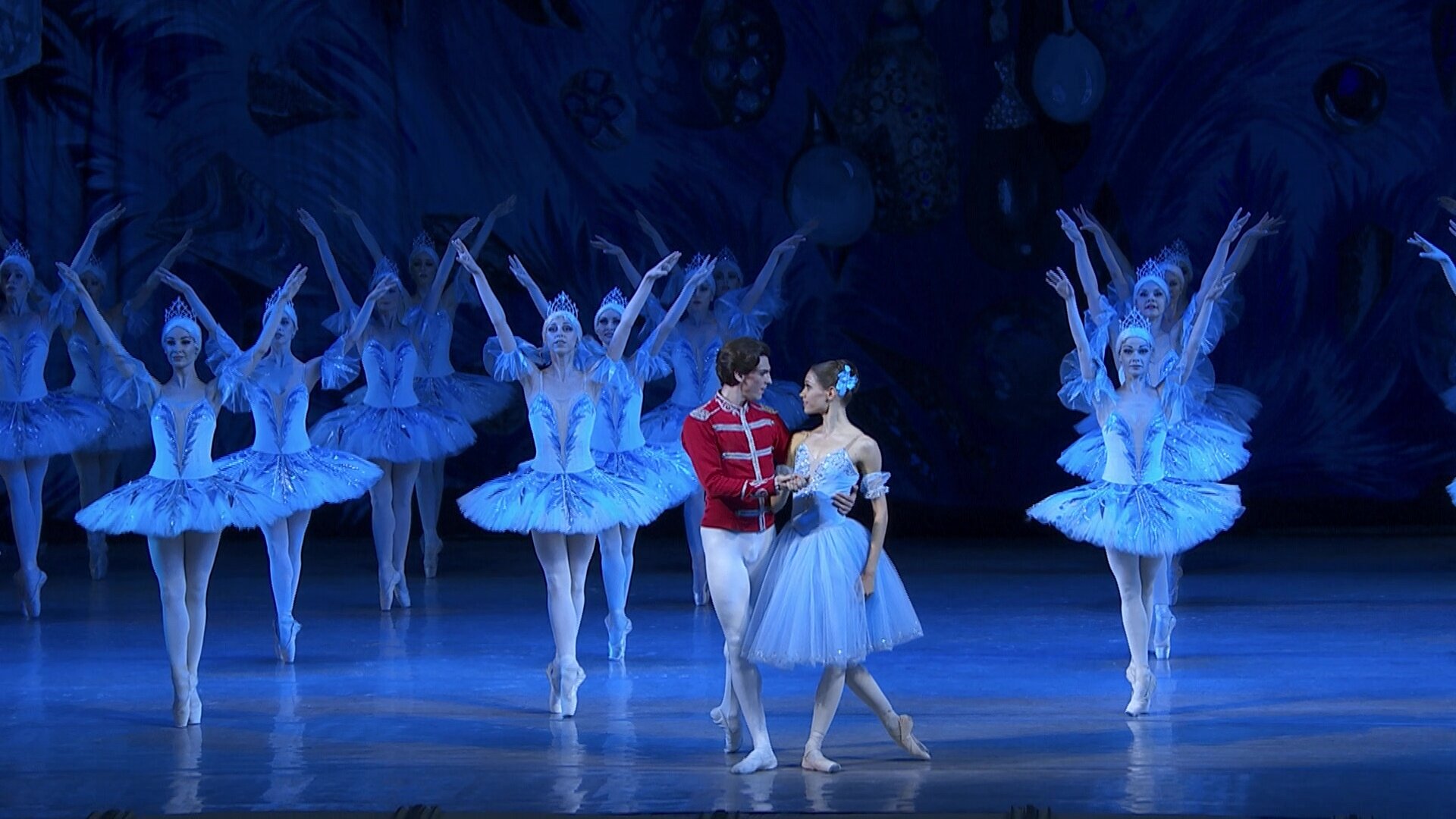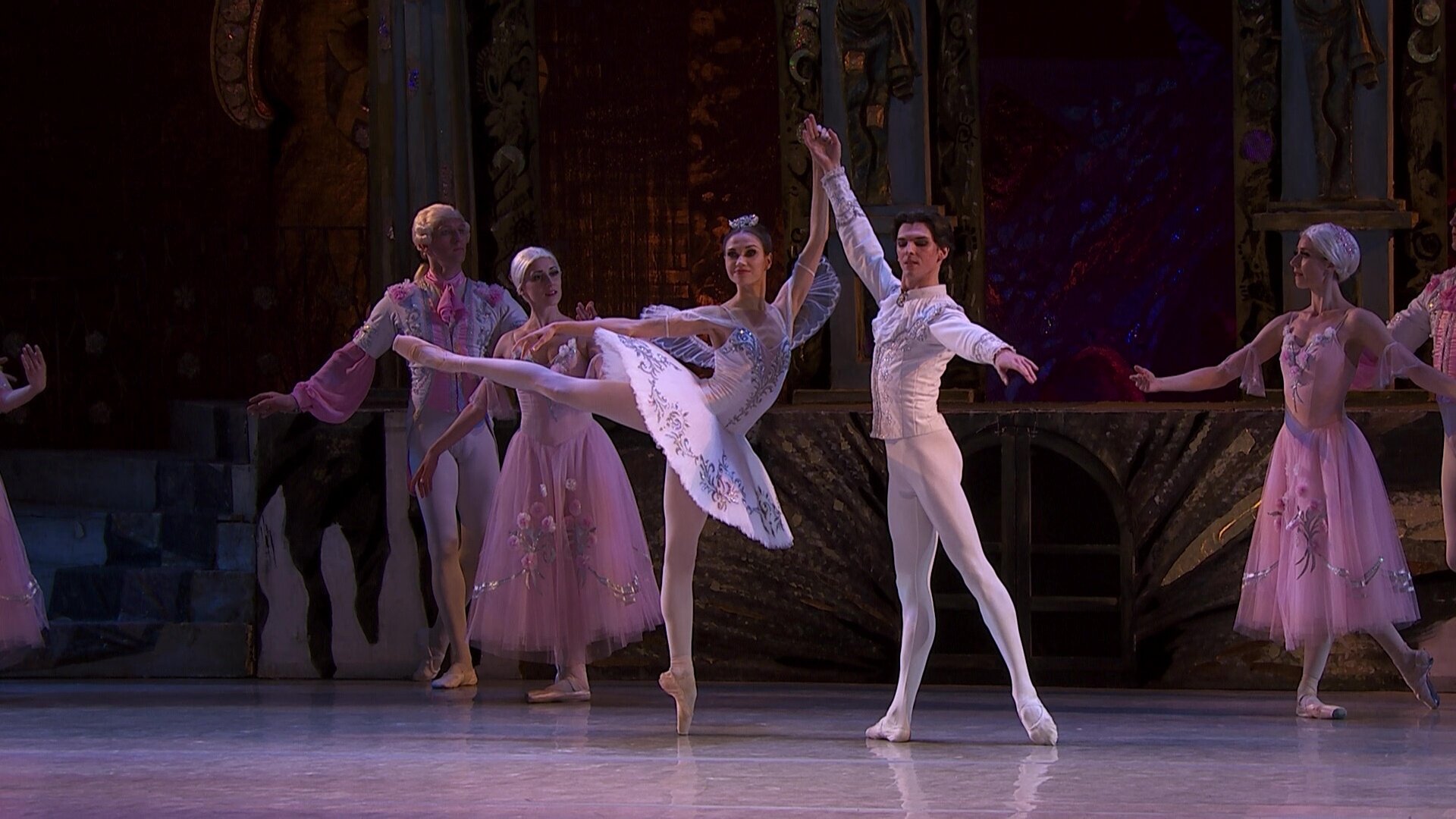

The Nutcracker ballet. Music by Tchaikovsky to a libretto by Ernst Theodor Amadeus Hoffmann. Choreographed by Valery Kovtun after Marius Petipa. Filmed in 2018 at the National Opera of Ukraine. Stars Oleksiy Kovalenko (Stahlbaum); Liudmyla Melnyk (His Wife); Iuliia Moskalenko (Clara, their Daughter); Ielizaveta Gogidze (Fritz, Clara’s Brother); Iaroslav Tkachuk (Drosselmeyer); Ielizaveta Cherniak (The Nutcracker Doll); Mykyta Sukhorukov (The Nutcracker-Prince); Ruslan Avramenko (Mouse King); Sergii Kliachin (Harlequin); Ganna Muromtseva (Columbine); Marjia Nelen (She-Devil); Volodymyr Kutuzov (He-Devil); Raisa Betancourt and Oleksandr Shapoval (Spanish Dolls); Sergii Kliachin and Anastasiia Shevchenko (Indian Dolls); Ielizaveta Gogidze and Mykyta Hodyna (Chinese Dolls); Mariia Nelen and Iaroslav Tkachuk (Russian Dolls), Lina Volodina, Oksana Sira, Vladyslav Romashchenko, and Maksym Bilorkynytskyi (French Dolls), and dancers from the Ballet Company of the National Opera of Ukraine. Oleksiy Baklan conducts the Orchestra of the National Opera of Ukraine. Stage and costumes by Marjia Levytska; lighting by Igor Samarets. Directed for TV by Bertrand Normand; produced by François Duplat. Released 2018, disc has 5.1 dts-HD Master Audio sound output. The keepcase art also mentions a Mariia Nelen, but we think this is a typo for Marjia. There was no keepcase booklet with this title. The art on the keepcase says a synopsis is available on belairclassiques.com, but we couldn’t find it. Grade: C
The Ukraine version of The Nutcracker is probably closer to the original 1892 production than most versions even though the Sugar Plum Fairy and a few other minor characters are edited out. In our first screenshot you see the adorable Clara (Iuliia Moskalenko) with her nutcracker doll. Once the doll becomes her prince, she sticks with him through the whole show including the grand pas de deux at the end of her dream. Below she is back in the Stahlbaum living room. Note the underwhelmingly small Christmas tree:
Most of the costumes are nice enough. However, next below see Drosselmeyer (Iaroslav Tkachuk) wearing a cape that appears to be made of black plastic garbage bags. Cheap materials can look OK in a big theater, but they may be betrayed by high-def cameras:
The Stahlbaum living room below is surreal with (what we believe) is a model of the house suspended from the ceiling, a single chair where Clara will fall asleep, and a huge piece of furniture supporting a giant clock frozen at midnight. If you are familiar with Russian/Ukraine domestic art and furnishings, maybe you can tell us all this is about. The Ukraine National Ballet company appears to have a large roster of men and women, but no children or character dancers. Below we see 8 little girls with dolls and 9 little boys with swords at the Christmas party — all portrayed by grown women. Everything is choreographed with severe formality — there is little of the naturalistic party fun we enjoy in modern productions:
The adult dance scene below is also quite formal:
Harlequin (Sergii Kliachin) and Columbine (Ganna Muromtseva) have tacky costumes:
Drosselmeyer does little other than point his cane at the entertainers appearing before the party. The two characters below are (on your left) the She-Devil (Marjia Nelen) and the He-Devil (Volodymyr Kutuzov). Blackface is, of course, pretty much verboten these days, but in 1892 there were few people in Russia (and maybe few today in Ukraine) who would be upset by this:
Even the nutcracker doll is played by a woman — here Drosselmeyer complains that nasty brother Fritz has broken the doll:
The Mouse King (Ruslan Avramenko) and his not-very-impressive band of mice:
It Clara’s dream, the nutcracker doll turns into a prince. He takes Clara to the Land of Snow:
Next the lovers are transported to the Land of Sweets in the shabbiest prop we have seen in a ballet video:
The Indian Dolls dance to the famous “coffee music”:
The Chinese Dolls:
All the divertissement scenes are simple and skimpy. The next view below is from the Doll Finale. On the back row are the 2 Russian Dolls and The 2 Chinese Dolls. Center are 2 Spanish Dolls and the 2 Indian Dolls. On the front are 4 French Dolls:
The next two screenshots are from the Waltz of the Flowers:
And finally we have two shots of the concluding pas de deux with Clara in tutu:
Ukraine is a large Slavic country with European culture. Below is the Opera House in Kiev:
Ukraine is mostly a vast agricultural area with the low average per capita income and wealth of a developing rather than an industrialized country. Below is the national orchestra wearing white or black shirts. When we started HDVDarts in 2008, we expected to get Blu-ray discs of fine-art cultural events from all over the world. But almost everything has been produced in Western Europe, the United States, Japan, and Russia. Subject title is the first recording we have made by native forces in the developing world (but produced by BelAir out of France).
The Ukrainians should be congratulated for what they have achieved. But they still have to up their game considerably to be competitive with the established western ballet companies. And how did the editor here fail to cut shots like the one below of conductor Oleksiy Baklan?
The screenshots above and the YouTube clip below make this title look better than it actually is. The choreography is crude and stilted in the opening party Act with none of the delight inspired by modern approaches with child dancers to liven things up. The divertissements dances are thin and overshadowed by other acts around the world swept up in the country-doll-dances arms race. The sets and props are especially primitive. The costumes are much better but still seem a bit anachronistic. The star dancers are serviceable, but overshadowed by their counterparts in the West. The female corps, on the other hand, seems to be near or on a par with the competition in the Land of Snow and the Waltz of the Flowers. Bertrand Normand film does a magnificent job of catching 81% of his shots whole body shots (probably unwatchable on DVD). But alas, his pace tends to be too fast. We did a Wonk Worksheet sample of about 20 minutes from Act 1, and the average duration of clips was only 6 seconds per clip, which suggests a missed opportunity and results in a diagnosis of mild DVDitis. Bertrand also afflicts us with many unwanted shots of conductor Baklan (rare in ballet recordings). The orchestra starts off strong but seemed to falter toward the end, and the recording is only adequate. If this came to us from the West, it would get a D grade at best, but we couldn’t bring ourselves to do this to the valiant Ukrainians. Let’s call it a C, but there are so many better choices. You probably would not want to try this title unless you have a special reason.
Here’s an official clip:
OR





















